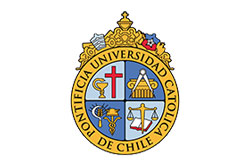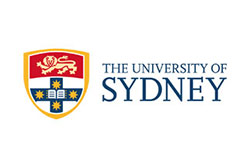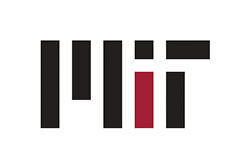A driver, a transportation official, and a transit advocate explain why Seattle recently saw one of the biggest citywide increases in passenger numbers.
Original: The Atlantic
Almost every major U.S. city has seen years of decline in bus ridership, but Seattle has been the exception in recent years. Between 2010 and 2014, Seattle experienced the biggest jump of any major U.S. city. At its peak in 2015, around 78,000 people, or about one in five Seattle workers, rode the bus to work.
That trend has cooled slightly since then, but Seattle continues to see increased overall transit ridership, bucking the national trend of decline. In 2016, Seattle saw transit ridership increase by 4.1 percent—only Houston and Milwaukee saw even half that increase in the same year.
Bus service is crucial to reducing emissions in the Seattle region. According to King County Metro, which serves the region, nearly half of all greenhouse gas emissions in Washington state come from transportation and its operation displaces roughly four times as many emissions as it generates, by taking cars off the road and reducing traffic congestion. The public transit authority has been recognized for its commitment to sustainability and its bus fleet is projected to be 100 percent hybrid or electric by 2018.
So what exactly did Seattle do to improve ridership in a city famously clogged by cars? Three people with different positions in the Seattle transit community—a bus driver, a transportation official, and a transit advocate—weigh in.
The bus driver: When buses get priority, riders prioritize the bus
On Third Avenue, where Adelita Ortiz’s routes usually begin, her only traffic obstacle is a stream of other buses traveling down the road. The street blocks off cars and becomes a transit-only corridor during the morning and afternoon rush hours (private vehicles are supposed to turn off after a block on the street). Third Avenue is one of a few transit malls in the United States that restrict private automobile use. Only the Portland Transit Mall or Boston’s Silver Line bus tunnels come close to dedicating as much space to public transit as Seattle’s arterial rush hour north-south escapeway.
Ortiz says that not only helps buses to move faster, but it allows drivers to execute a technique called “the weave”—where the buses take turns picking up passengers on the side of the road. Since the buses pick people up at only some stations, they stagger when to yield the right of way, while other buses behind pull over to pick up more people. Without cars in the way, it’s easier for buses to trade off pick-ups.
“There’s a gazillion buses during rush hour,” Ortiz says. “We can’t all stop at every stop, so we alternate taking the right of way as a courtesy to each other.” This priority to buses also has helped expand the city’s RapidRide, a rapid-transit bus system that makes fewer stops and features off-board payment and all-door boarding.
Since 2010, the city has absorbed an additional 45,000 new workers—47 percent of whom commuted by some form of public transit in 2016 and only 2,225 of those newcomers drove alone to work.
“Over the years I’ve noticed we’ve gotten a lot more people moving through Seattle, a lot more traffic and a lot more passengers,” she says.
Ortiz says that dedicated bus corridors, bus lanes, and other improvements make her job easier. The city is planning its first complete rapid-transit bus route, to be built in 2018.
“It’s all very helpful,” she says. “We’re picking up hundreds of people per day. They’re depending on us to get them home safely. We do our best to get them there on time.”
The public official: “Small, surgical fixes add up to something big”
As great as it would be to maximize the bus’s reign on the roads everywhere, that’s not always possible. Scott Kubly, the director of Seattle’s Department of Transportation (SDOT), says making the system better mostly means spotting small fixes. “We don’t just focus on the big corridor projects,” Kubly says. “We are focused on making the small, surgical improvements that add up to something big.”
SDOT and King County Metro have worked together for a spot-improvement program, where they identified bottlenecks and slow spots on bus routes. Kubly notes an example at a challenging intersection along Rainier Avenue and Dearborn Street. “That’s a super busy street carrying tens of thousands of cars a day and there was a signal where the bus was experiencing a lot of delay,” Kubly says. They identified a center turn lane that was low enough volume that it could be turned into a transit-only lane for just a block, which allowed buses to pull up to the front of the line at the traffic signal.
With buses moving about a minute and a half faster along that road’s one-mile stretch, Kubly says the service improvement speaks for itself.
In other trouble spots, they inject more traditional solutions. They added bus bulbs on the side of the road to pick up passengers without blocking traffic. They introduced queue jumps, where buses get to take a designated lane to the front of the traffic and get a few extra seconds at the light to get a head start on traffic. They put transit islands in busy corridors for easier boarding. All this accumulates into more frequent and faster bus service.
“There’s not a big communications campaign around ‘Hey, we just put in this queue jump and your bus just saved 10 seconds every trip,’” Kubly says. “Making small tweaks helps the bus maintain its level of reliability and people are going to choose it because it is producing the results that they want.”
Another example of good coordination is along Westlake Avenue, where SDOT-owned streetcar lines now share their dedicated transit lane with King County’s RapidRide C line and 40 bus. “That’s right in the heart of Amazon [offices],” Kubly says. “So we put buses on the streetcar lane and went from having a streetcar every 10 minutes to a bus or streetcar every two and a half to three minutes. By not getting bogged down in disputes about ownership, we were able to really improve the customer experience.”
The advocate: Seattle funded better bus service by being honest with voters
“What’s happened with the city of Seattle was an interesting and important experiment,” says Shefali Ranganathan, the executive director of Transportation Choices Coalition. Ranganathan has led the organization for nearly a decade, advocating for better transit, biking, and walking infrastructure across Washington state. “For years, the county has known what its unmet needs are in terms of frequency and reliability to provide high quality [bus] service. But the issue around funding was that there were never enough resources to allow for [planning] flexibility.”
King County relies on a sales tax to fund about half of the bus system’s operating budget. When the recession hurt revenue, the system eventually faced a funding gap. A ballot initiative was proposed to increase the sales tax and a car-tab fee.
And Ranganathan says people voted to pay more for transit because of the clear and expansive picture provided by the city of just what a budget shortfall would do their service. King County Metro released guidelinescalculating route productivity and equity for low-income communities where some 74 routes would be cut and another 107 routes would be revised for reduced service. That transparency made Ranganathan’s job of conveying information to the public easier—her organization was able to use that city data to build a campaign around transit accessibility. “Data-based decision making has been really essential,” says Ranganathan. “Because some questions [about transit] are hard for voters to understand and it’s important for the public to understand how service is distributed.” While a county-wide vote to halt those route cuts in April 2014 failed, the city voted to expand bus service that November in the Proposition 1 campaign.
With Proposition 1 in 2014, nearly 60 percent of Seattle voters approved a sales tax increase and a car-tab fee increase (a motor vehicle excise tax based on vehicle value during inspections) to raise an additional $45 million annually for more bus service hours in Seattle.* That meant a 15 percent expansion in bus service over the last three years that reduced overcrowding and increased reliability and frequency. Just last year, Seattle voters approved another $54 billion expansion of numerous public transit systems across the region called Sound Transit 3—raising the sales tax in King County another 0.5 percent and increasing the car tab-fee again.
Ranganathan says the victory came down to persuading voters they would personally benefit. “At the end of the day, when you’re at the ballot box and you’re wondering if you’re willing to pay these taxes, it’s very much a question of, ‘Do I see myself taking the bus?’” she says. “When service gets better and it’s a pleasant experience that gets you where you need to go, transit becomes your first choice because it’s the most reliable and frequent option.”












